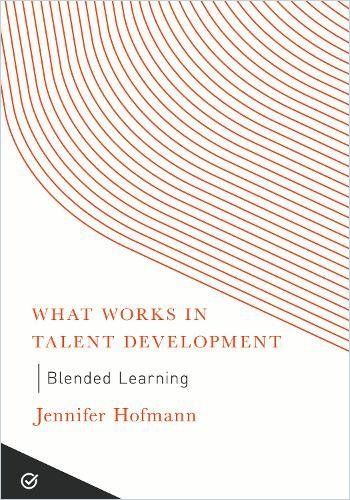“Virtual Learning Is a Great Equalizer.”

Due to COVID-19, all in-person training and professional development programs shifted to virtual environments. What have been some of the initial challenges that organizations encountered?
Jennifer Hofmann: At first, clients were trying to come up with temporary solutions. They expected employees to be working from home only for a month or two, and they thought that training them seemed like a good use of their time. But since they expected the situation to be temporary, they did not want to redesign everything. They just moved everybody and everything online. So our first big challenge was that people didn’t necessarily accept the shift to virtual training to begin with.
What are some of the key adaptations instructors need to make to adjust to a virtual learning environment?
All-day training sessions are always hard but managing people’s focus is easier in a face-to-face classroom than online. In a face-to-face classroom, people are either looking at the facilitator or a projector. They are not trying to take in everything at once while staring at 18 different faces. Face-to-face facilitators haven’t been trained in conducting online sessions, so the first thing they had to do was redesign the learning content to make it more effective in a virtual environment.

The shift to a virtual learning environment has allowed organizations to scale learning content. But a one-size-fits-all approach won’t work for an audience that is multicultural, multilingual and multigenerational. How can you scale content while also accounting for the diversity of the learning audience?
The fact that we are becoming very conscious of a multicultural audience is one of the positive things coming out of the shift to a virtual learning environment. We would generally design our content for a US audience – that’s what we know. And then we would shift it out to the rest of the world and leave it up to them to make it culturally relevant for them. Now, we must become much more aware of what is the impact of teaching to a multicultural audience. Is it too early in the day? Is it too late? Is there a public holiday in Japan? I’ve always been an advocate of the fact that we’re not just delivering content to people in the virtual classroom, we are also teaching them how to work in a virtual team – which includes learning to respect and appreciate cultural differences.

Do you think the shift to virtual learning has created more equal access to workplace training?
I’ve always thought that virtual learning is a great equalizer. Especially before video, gender, race or disability suddenly no longer was a factor. We can also give people who are uncomfortable speaking out loud the opportunity to make their voices heard in the chat. We’re creating different ways for everybody to communicate.
Producers can play an important role in improving everybody’s learning experience by being a learner advocate in addition to offering tech support.
Jennifer Hofmann
Acting more as instructional partners, producers can make sure the content is being delivered in a way that the audience can understand. They monitor the chat and let the instructors know if they need to go back over some of the content. A native language producer can help translate some of the terms that non-native English speakers may find difficult to understand.
Helping learners stay focused in a virtual environment is a challenge. What are some of the ways to ensure learners remain engaged and training stays effective?
In a face-to-face classroom, you can control people’s attention better. When delivering content virtually, we are not in charge of managing learners’ environment. People may attend the learning session from home with their kids in the background, from a coffee shop or a co-working space. Looking at their screen, learners see the facilitator, PowerPoint slide and the other participants all at once. They may also be distracted by incoming emails and phone calls. In a virtual environment, the social norm saying “I better not answer a phone call because everybody else will see me or be interrupted” no longer exists.
It’s part of the instructor’s job to help learners recognize where to focus.
Jennifer Hofmann
One of the things instructors can do is to have learners do something every three to five minutes. We can create concurrent engagement where everybody is doing something at the same time, such as writing on the whiteboard or sharing their top three ideas in the chat that the producer will help manage.
But we also need to look at engagement at a bigger level. We need to think about emotional engagement: How does the learner feel about the content? Does he or she want to be here? We also need to think about the intellectual response to the training: Do learners feel they need to be involved in the training or just show up for it? From an adult learner’s perspective, just listening to a 45-minute webinar is not intellectually engaging. It’s very hard to stay engaged and motivated when you know you can just come back to the recording later.
The third component affecting engagement is environmental. If I’m learning in one place one day and someplace else the next, or if one day the kids are home and one day they’re not, that changes my environment – and with it my response to the training.
How can social learning complement more formal ways of learning in a virtual environment?
Social learning is an old concept. It means that learning takes place in a social context through observation or direct instruction. Thanks to technology, organizations can adopt more and more social learning. For example, you can create a group chat for every new technology you implement so people can ask questions and learn from one another. People learn who the experts are in the company and create their own communities of practice. More informal discussion boards and internal communication platforms are a way for people to interact with each other on a social level, which helps build trust when interacting with each other on a professional level. But we need to make it comfortable and easy for people to use these platforms. If it becomes part of the workflow, we’re going to start to see a blurring between formal and informal learning.
The goal is to embed learning in the flow of work.
Jennifer Hofmann
One of the advantages of the virtual and blended learning formats is that you don’t need to lock people up in a room for three days to teach them everything about a topic. Instead, you can teach the basics, have learners apply what they have learned right away and return for more later. This way, learning doesn’t feel like busy work anymore.
About the Author
Jennifer Hofmann is founder and president of InSync Training. Her entirely virtual consulting firm specializes in the design and delivery of engaging, innovative and effective blended learning.







